Autos
AUTOS: Ford Mustang Bullitt is limited edition Steve McQueen tribute
New models from Ford, Jeep pack major punch, hellish thunder


As a gearhead who still fawns over Matchbox cars and Gran Turismo video games, it’s the cars with muscle that really get my motor running. Of course, toys are one thing but reality is even better.
FORD MUSTANG BULLITT
$48,000
MPG: 15/24
Zero-60 mph: 4 seconds
For muscle car mavens, it doesn’t get much better than a Ford Mustang Bullitt. Introduced last year in time for the 50th anniversary of the action movie “Bullitt,” this is the third tribute model since Steve McQueen’s legendary car chase through the streets of San Francisco.
This limited-edition version — available for only two years or so — comes in select colors, including the iconic dark green on the original. Some of the same barebones styling is here, which means no Mustang badging on the wide black grille (though you’ll find a shiny Bullitt badge on both the trunk lid and steering wheel). And while the V8 in the 1968 sportster churned out an impressive 320 horsepower, today’s fastback, based on the high-test Mustang GT, boasts a whopping 480 horsepower.
A simple tap to the accelerator lets you fly down the road. Premium Brembo brakes give you plenty of control. Adding to the fun is the six-speed manual transmission with a nifty shifter knob that looks like a white billiard ball. The deep, guttural exhaust growl courses through your veins and becomes louder and more menacing each time you downshift.
Despite the macho appearance and performance, there’s plenty of pampering: heated/ventilated seats, smartphone integration, voice-control infotainment system and more. There’s also a blind-spot monitor and cross-traffic alert to help keep things safe. Most of all, this retro pony car neatly combines today’s tech gear with old-school cool.
FORD F-150 RAPTOR
$54,000
MPG: 15 city/18 highway
Zero-60 mph: 5.1 seconds
With the surging popularity of crossovers and other haulers, today’s muscle cars aren’t just two-door coupes anymore. Ford took its popular F-150 pickup truck — the best-selling vehicle in the U.S. for the past 37 years — and gave it the heart and soul of a hard-charging Mustang.
Power comes from a 450-hp twin turbo V6, which easily propels this 5,600-pound beast around corners and twisty roads. The Raptor’s overall look is imposing, with harshly chiseled corners and a towering presence. At 250 inches in length, the mammoth SuperCrew Cab model is almost two-and-a-half times longer than a Smart Fortwo. And the 8,000-pound towing capacity is impressive.
Yet beneath the Hulk-like demeanor lies a refined ride, with handling that’s light and nimble. The electronically adaptive suspension helps. So do the massive 34-inch tires, which also come in (yowza!) 35 or 37 inches. Despite the high ground clearance, the aluminum running boards allow you to easily get in and out of the truck.
As in the Mustang, you’ll find Recaro racing seats (this time with Raptor stitching) and a throaty exhaust note. There’s also smartphone integration, 360-degree camera and 10-speaker Bang & Olufsen stereo. Plenty of safety features are included, along with tons of interior storage and a power-sliding rear window. With so many amenities, the Raptor almost feels like a luxury car. But make no mistake, this is one tough Tonka toy on steroids.
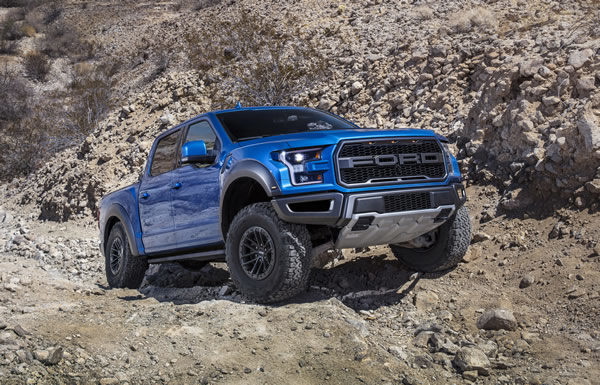
JEEP GRAND CHEROKEE TRACKHAWK
$89,000
MPG: 11 city/17 highway
Zero-60 mph: 3.5 seconds
Over at Jeep, known more for its off-roaders and family haulers, the automaker is also flexing its muscles. The result is the amazing Grand Cherokee Trackhawk, a premium crossover where all hell breaks loose. Literally.
Powered by the 707-hp supercharged Hellcat V8 — a phenomenal engine used in the Dodge Challenger and Charger — this track-worthy contender is faster than an Aston Martin Vantage or Porsche 911 Carrera. Mash the accelerator into the floorboard, and suddenly you can imagine what supersonic flight must feel like. Luckily, as you hurtle down the road like a screaming banshee, the superb braking can bring you back to reality. You can also select from various drive modes (Auto, Sport, Track, Snow and Tow) depending on the weather or your mood.
And there’s plenty of cargo space and stowage compartments. The cabin is loaded, featuring an Audi-like steering wheel and gauges, along with carbon fiber trim, panoramic sunroof and 8.4-inch touchscreen infotainment system. A spectacular Harman Kardon stereo with 19 speakers is also available. Of course, such power and panache come at a price, which is why the Trackhawk is the most expensive Jeep ever.
Toss in all the options, and suddenly you’re shelling out more than $100,000. Still, that’s less than most exotic cars. And who knows, you may be able to save in other ways. After all, who needs all those Red Bolts when the Trackhawk can jolt you awake.
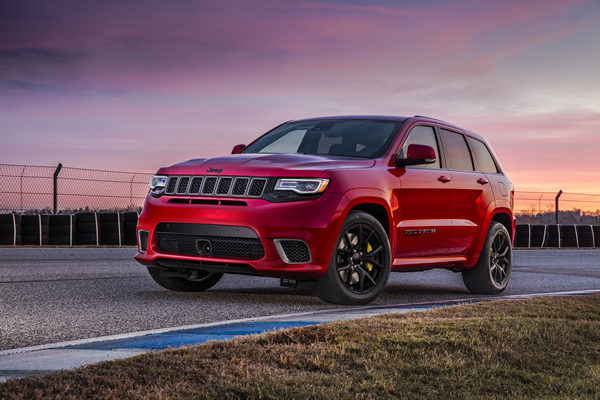
Autos
Revving up the holidays with auto-themed gifts
Lamps, mugs, headphones, and more for everyone on your list

Here’s how to shift your holidays into high gear.
Bentley Bottle Stopper
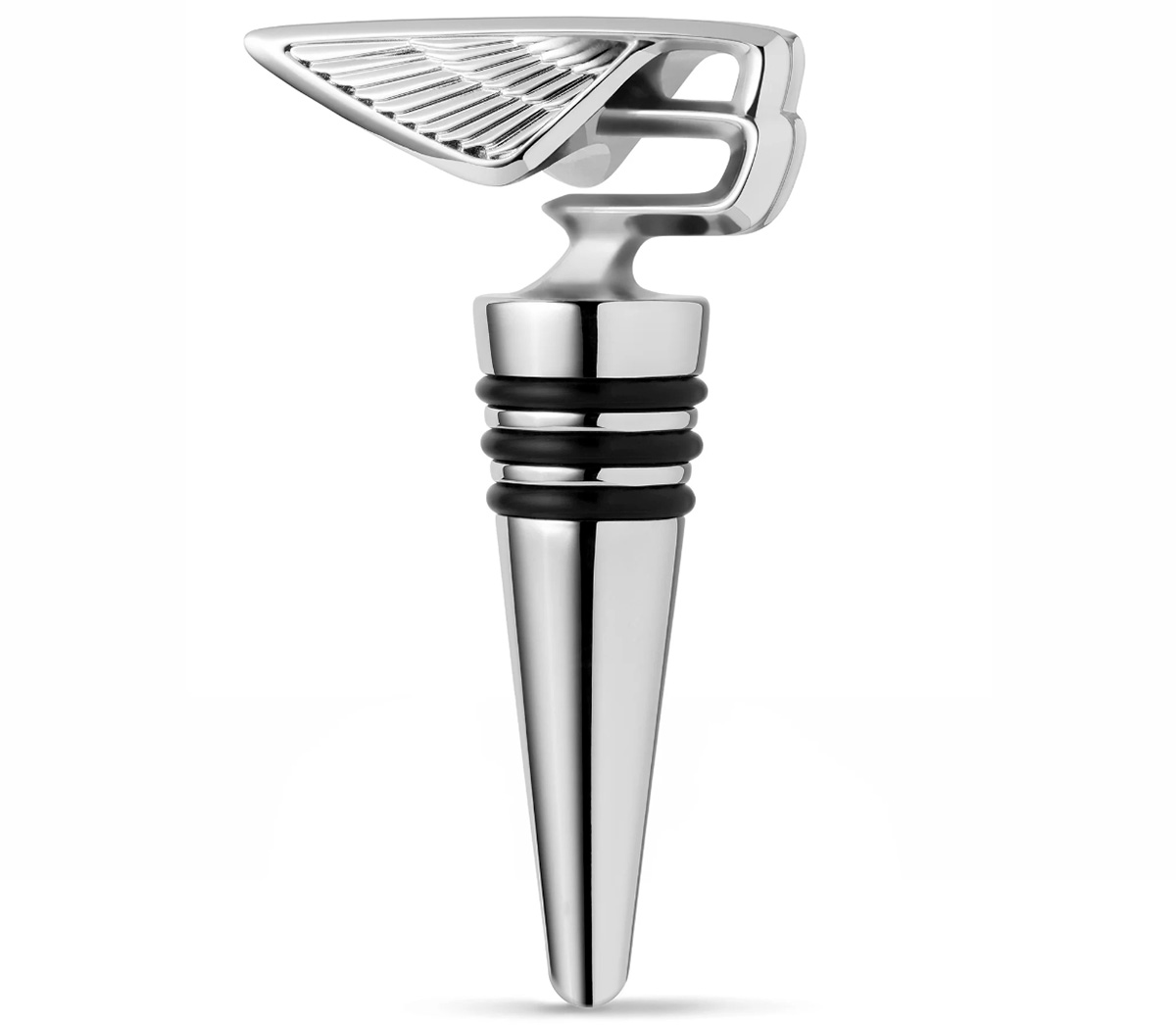
Pop your cork—in a good way—with a Bentley bottle stopper ($106), made of zinc alloy with chrome plating and rubber rings. The classy design is inspired by the automaker’s iconic “Flying B” mascot from 1930.
Subaru Motorsports Counter Stool

Belly up to the bar with the Subaru Motorsports Counter Stool ($175). The 30-inch-tall metal chair—with padded vinyl cover and automaker logo—is lightweight and swivels 360 degrees.
BMW Luxe Luggage

You won’t have trouble spotting this chic khaki-green BMW M Boardcase ($307) at airport baggage carousels. The high-performance “M” logo is etched on the durable polycarbonate casing, as well as on the main compartment zipper and all four of the sturdy double wheels. Comes with recycled lining, along with laundry and shoe bags.
Ford Yoga Gym Bag

The Ford Yoga Gym Bag ($15) has a wide handle and button strap to securely carry a yoga mat, as well as convenient pockets to stow water bottles and shoes. Made of black polyester, with reflective silver Ford logo. (Yoga mat not included.)
Kia Mini Lamp with Speaker/Sound

It doesn’t get much more Zen than a Kia Mini Lamp with Speaker and Sound Machine ($50). Made of bamboo, sturdy plastic and a fabric grill, the tiny wireless lamp has LED lighting with three settings. Pair with your phone to choose from eight soothing sounds: brook noise, bird chirp, forest bird, white bird, ocean wave, rainy day, wind and fireside.
Lexus Green Pro Set
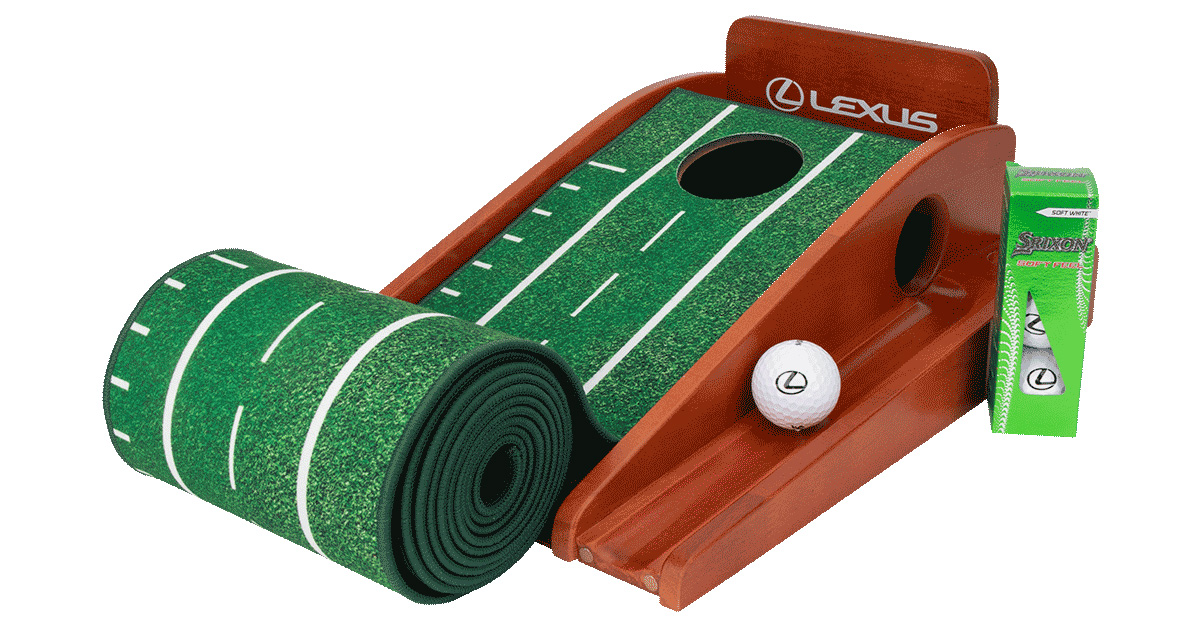
Practice makes perfect with the Lexus Green Pro Set ($257), a putting mat with “train-track markings” to help improve any golfer’s alignment. Lexus logo on the wood frame with automatic ball return.
Lamborghini Wireless Headphones

Turn on, tune in, drop out—well, at least at the end of a hectic day—with these Lamborghini Wireless MW75 Headphones by Master & Dynamic ($901). Batteries last up to 32 hours or up to 28 hours in active noise-canceling mode.
BMW Quatro Slim Travel Tumbler

The BMW Quatro Slim Travel Tumbler ($23) lives up to its name: sleek, smooth and scratch-resistant. Comes with leak-proof lid and non-spill design.
Ford Vintage Mustang Ceramic Mug

Giddy-up each morning with the Ford Vintage Mustang Ceramic Mug ($29). With cool blue stripes, the 14-ounce mug features a silver handle and iconic pony emblem.
My First Lamborghini by Clementoni
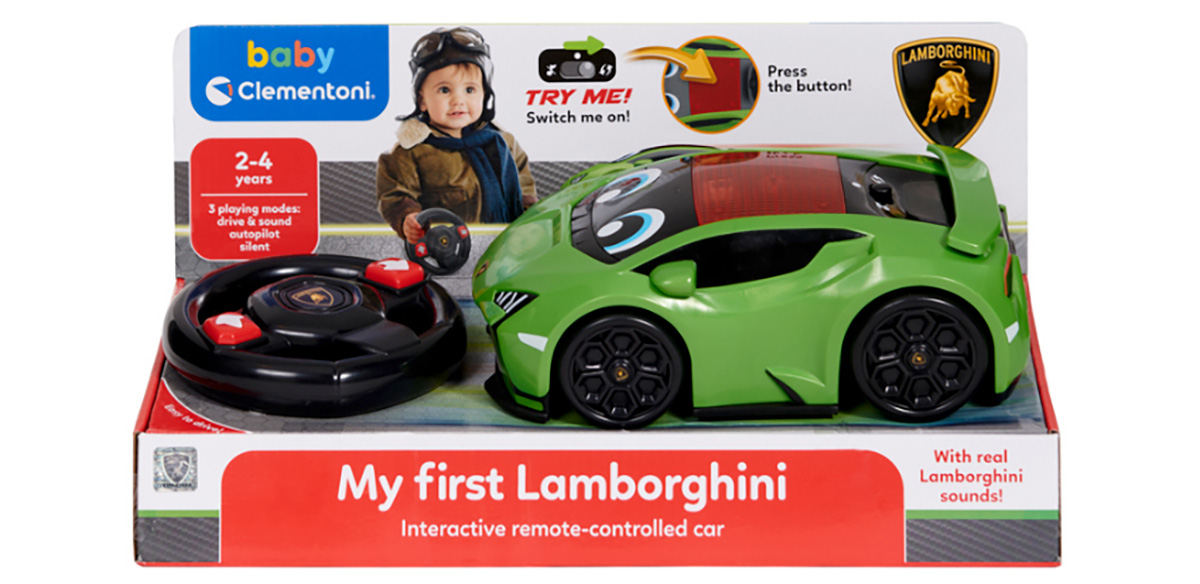
Proving it’s never too early to drive an exotic car, My First Lamborghini by Clementoni ($62) is for children ages two- to four-years old. Kids can activate the remote-control car by pressing the button on the roof or by using the remote. This Lambo certainly is less expensive than an entry-level Huracan, which starts at $250,000.
Rolls-Royce Cameo

For adults looking for their own pint-sized luxury ride, there’s the Rolls-Royce Cameo ($5,500). Touted as a piece of art rather than a toy, this miniature collectible is made from the same solid oak and polished aluminum used in a real Rolls. As with those cars, this one even has self-leveling wheel-center caps (which operate independently of the hubcaps so that the RR logo is always in the upright position).
Maserati Notebook
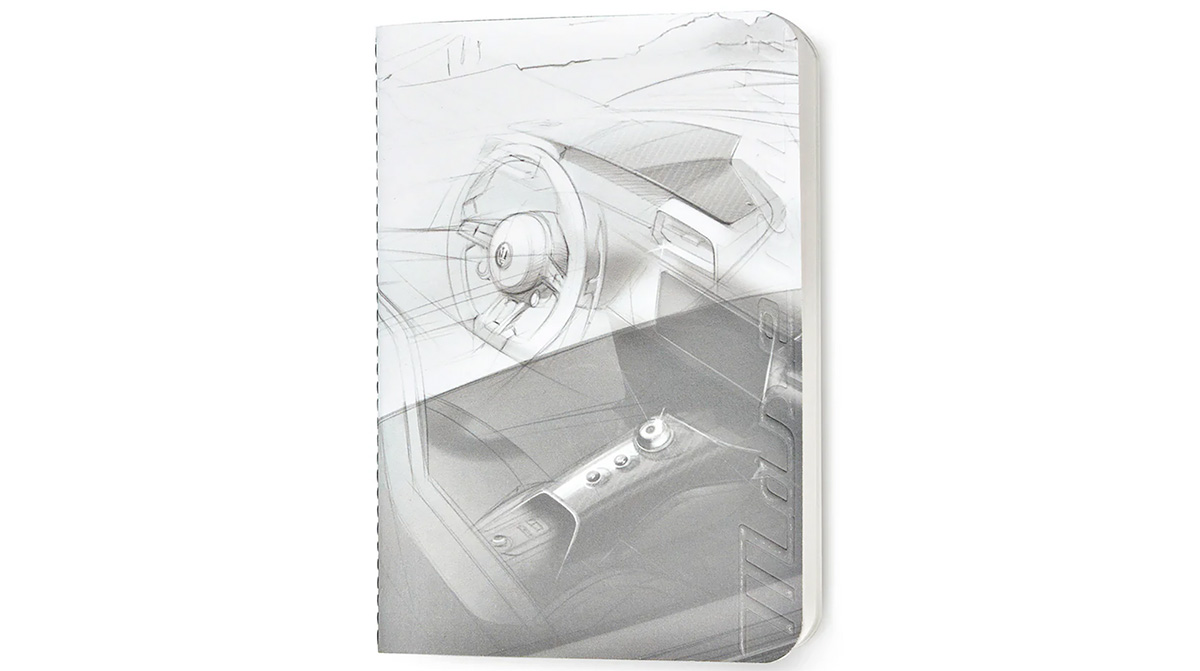
For those of us who still love the art of writing, the Maserati MC20 Sketch Note ($11) is an elegant notebook with 48 sheets of high-quality paper. The front and back covers feature stylish sketches of the interior of a Maserati MC20 supercar and the Maserati logo. Comes with saddle-stitched binding using black thread.
Dodge Demon Dog Collar
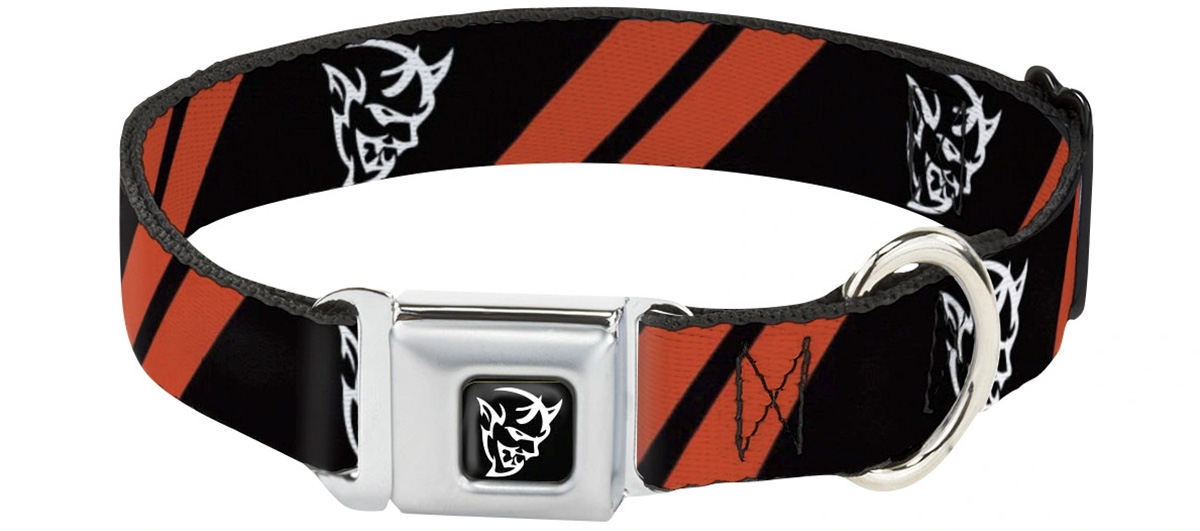
If your pooch is more Fluffy-kins and less the guard dog you sometimes need it to be, then there’s the Dodge Demon Seatbelt Buckle Dog Collar ($30). Made of steel and high-density polyester with a tiny seatbelt-buckle clasp, the collar is emblazoned with devilish Dodge Demon logos.

After a brief hiatus that started in late 2023, the Chevy Bolt—once a practical wallflower in the EV world—arrives back in showrooms in early 2026. It’s now sleeker, sassier, and less expensive than ever. And why not? Saving the planet should be affordable — and look good on Instagram.
CHEVY BOLT
$29,000
Range: 255 miles
0 to 60 mph: 7.5 seconds
Cargo space: 16.2 cu. ft.
Pros: Shapelier styling. Faster charging. Wallet-friendly price.
Cons: No speed demon. No AWD option. Modest towing capability.
If the previous Chevy Bolt was like a dependable friend who didn’t exactly turn heads, the new version has had a queer awakening. Still practical? Absolutely. Still efficient? You bet. But the exterior now boasts a sharper, wider stance, with slimmer headlights and punchier details that scream confidence instead of compromise.
Charging speed—which was anemic before—is significantly faster: roughly 100 miles in just 10 minutes at a fast-charging station. If you’re on a longer road trip and need to reach up to 80% battery capacity, it takes just 26 minutes—which is less than half the time of the previous model.
Range sits around 255 miles, so you’ll have no problem making it from your downtown apartment to that weekend cabin getaway—or your ex’s new city, if you’re feeling chaotic.
Regenerative braking is also improved, recapturing more energy for better efficiency and the ability for seamless one-pedal driving. In fact, lift your foot off the pedal and you can now come to a complete stop without touching the brakes.
As for speed, there’s now 210 horsepower—perfect for zipping through traffic (and faster than the Bolt’s archnemesis: the Nissan Leaf).
Overall, the ride is composed and confident—smooth over bumps, whisper-quiet, and surprisingly fun. No, this is not a performance diva, but it’s got lowkey swagger.
Inside, the Bolt is all grown up: cozy, modern and uncluttered, with soft-touch materials and ambient lighting that can match your mood. The cabin feels designed for people who appreciate good design—and good lighting for selfies.
There’s also enough tech to impress gadget-loving friends without being overwhelming. A massive, curved touchscreen runs Google Built-In, so your Maps, Assistant and playlists are always ready to go. Apple CarPlay and Android Auto are still here, and the interface feels logical, polished and just a touch playful.
And the suite of safety features is impressive: automatic braking, lane-keeping assist, blind-spot monitor, 360-degree camera, parking assist—it’s all here. But the crown jewel is Super Cruise, GM’s hands-free driving system that can take over on thousands of miles of highways. Forget route planning or battery-range concerns, this high-tech system does it all for you—including automatic lane changes on compatible roads.
Headroom and legroom are more than decent, especially for front-seat passengers. But for serious shopping mavens, rear cargo capacity is basically average. Luckily, the Bolt’s stowage quickly balloons to three times the size with the rear seats folded. (CityCenter, her I come!)
If the first Bolt seemed like that sweet environmentalist who handed out reusable straws, this one’s their supercharged offspring—still saving the planet, but now with a jawline and a Spotify playlist that slaps. It feels like an EV that makes sustainability something to celebrate, not tolerate.
To me, you could say the Bolt didn’t just come back — it came out, fully charged and ready to shine.

The BMW X4 and its spicy sibling, the X4 M, are like that annoying A-list couple: One’s got the sleek, stylish look that turns heads, and the other is the high-energy dancer in six-inch heels who just won’t leave the stage. Both deliver, but in different flavors.
BMW X4
$57,000
MPG: 21 city/27 highway
0 to 60 mph: 6.2 seconds
Cargo space: 18.5 cu. ft.
PROS: Effortless acceleration. Easy handling. Elegant looks.
CONS: Eensy-weensy side-door storage. Vexing electronics.
The BMW X4 compact SUV is all about presence—a sloping roofline screams “crossover coupe,” while the refreshed front fascia exudes enough attitude to feel modern without overdoing it.
Inside, the X4 is full glam. Cabin materials lean upscale, with form-fitting, multi-adjustable seats that are heavenly. And optional upholstery colors go beyond basic black. Think mocha brown, oyster beige and even a bold red if you’re feeling extra smart.
A curved display sweeps across the dash like an opera diva, with a nice mix of touchscreen and dial controls. But while some drivers may swoon over the nav system’s adaptive map mode—which enlarges the view on the screen automatically every time you approach a turn, intersection or merge lane—it took some doing for me reset the monitor to the old-school static view I prefer.
Performance-wise, the base model—the xDrive30i—starts with a turbocharged four-cylinder (good for 248 horsepower). But the real sweet spot is the six-cylinder xDrive40i, which pumps out a robust 382 horses. This is not a sports car, but it sure is playful—like a friend who insists on karaoke after midnight and somehow nails every note.
Handling is sharp for a crossover, thanks to BMW’s all-wheel drive and well-tuned suspension. But while the sharply angled roof sure is sexy, it also means limited rear headroom and cargo space. Luckily, the stowage expands to almost three times the size by folding down the backseats.
Of course, buyers aren’t choosing the X4 because it’s an overt hauler. They want intriguing looks and, well, an ego boost. I found this Bimmer to be daring enough for date night, practical enough for groceries and fun enough to take on twisty back roads.
BMW X4 M
$81,000
MPG: 15 city/20 highway
0 to 60 mph: 3.9 seconds
Cargo space: 18.5 cu. ft.
PROS: Exhilarating power. Exotic feel. Elegant lines.
CONS: Anemic fuel economy. Excessive sticker price.
If the BMW X4 is like your chic brunch buddy, then the high-performance X4 M is the club friend who orders tequila shots for everyone and convinces the DJ to play Beyoncé’s “Renaissance” front to back. This thing is drama—in the best way.
Under the hood, the X4 M packs BMW’s beloved 3.0-liter twin-turbo inline-six, tuned for 473 horsepower. In the Competition trim level, you get a staggering 500 horsepower and can fly from 0 to 60 mph in as little as 3.2 seconds. (Yes, that’s quicker than some exotic race cars. But for me, driving either one of these bad boys was like voguing down a runway in broad daylight.)
The styling cues crank things up, too: aggressive air intakes, quad exhaust tips, performance wheels and a slightly angry stance. The X4 M doesn’t just look sporty, it seems to be challenging every vehicle out there to a dual. Inside, the M-specific touches—sport seats, carbon-fiber accents and customizable drive modes—reminded me that this isn’t just another pretty face.
On the road, this BMW is absolutely thrilling. Steering is precise, grip is endless and the engine’s growl feels more Broadway belter than coffeehouse crooner. Sure, the ride is firm—not exactly built for Sunday yoga Zen class—but that’s part of the appeal. Anyone shopping this car wants intensity.
Alas, practicality does take a hit. As with the regular BMW X4, rear cargo area is tight. And eco-conscious drivers will be put off by the low fuel economy here. But let’s be real: no one buys an X4 M for Costco runs. They buy it because of the over-the-top performance and panache—and just enough utility to make sense.
IOW, the X4 M is for extroverts, people who thrive on making an entrance. If the standard X4 is your sophisticated weekday outfit, the X4 M is your sequined Saturday night.
-

 Virginia5 days ago
Virginia5 days agoDOJ seeks to join lawsuit against Loudoun County over trans student in locker room
-

 Photos4 days ago
Photos4 days agoPHOTOS: The Holiday Show
-

 Health4 days ago
Health4 days agoChoose U ambassadors share lived experiences with HIV, personal reflections, and insights
-

 Theater4 days ago
Theater4 days agoStudio’s ‘Mother Play’ draws from lesbian playwright’s past














